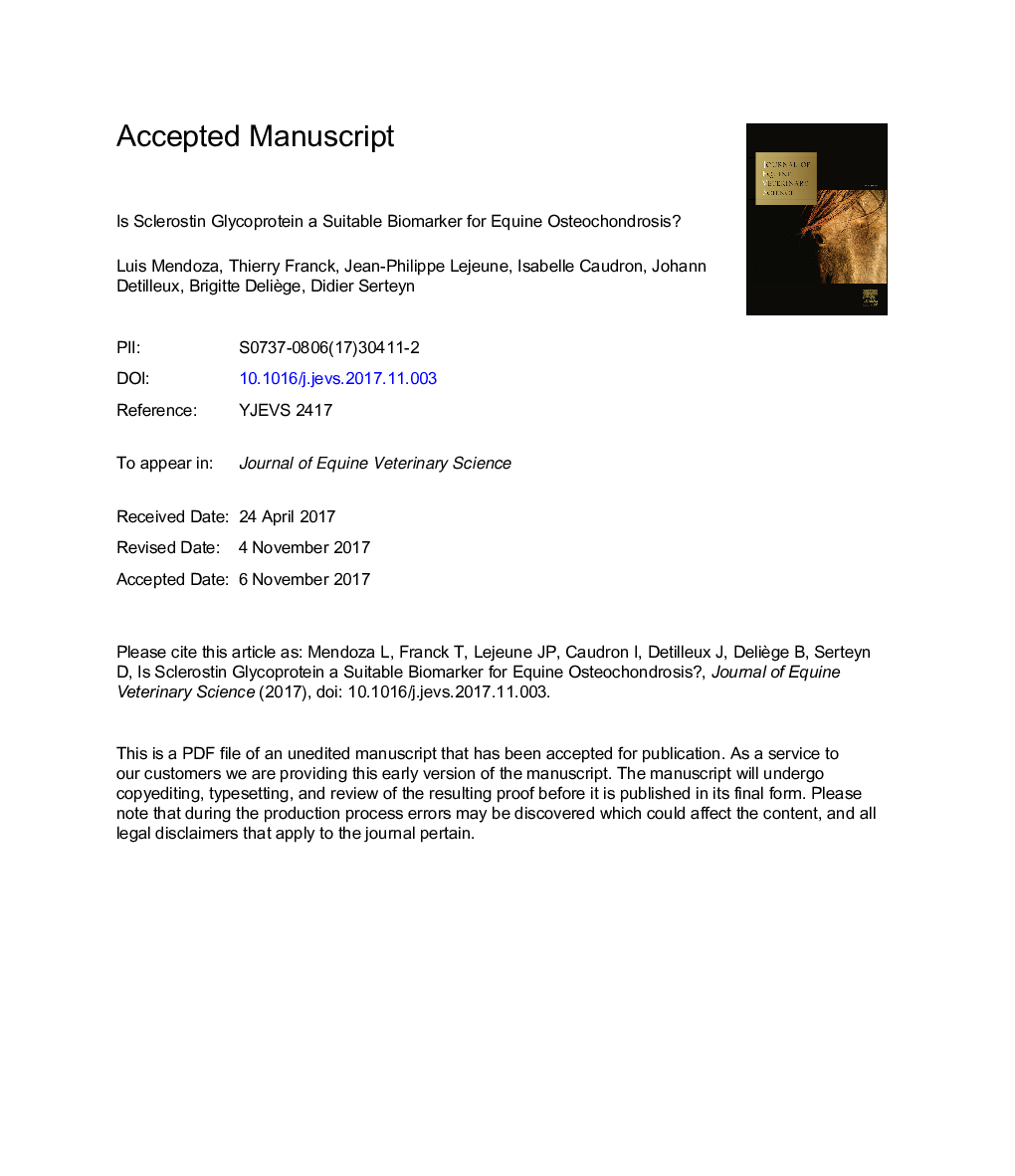| Article ID | Journal | Published Year | Pages | File Type |
|---|---|---|---|---|
| 8483102 | Journal of Equine Veterinary Science | 2018 | 27 Pages |
Abstract
Osteochondrosis (OC) disease appears to be multifactorial in origin, including skeletal growth rates, nutrition, endocrinological factors, exercise, biomechanics, and other environmental factors. Endocrinological and metabolic factors seem to have an important role in the pathogeny of OC like the Wnt signaling pathway. One of the regulators in the Wnt signaling pathway is the sclerostin glycoprotein. The aim of this study was to investigate the sclerostin blood concentration according to the evolution of the disease, the environment, and the age but also its use as a possible biomarker for OC disease. Relation between age and sclerostin concentrations was calculated by a linear regression. A relation was found between age and sclerostin concentrations, but also a significant relation between age and the sclerostin concentrations was observed for two subgroups (OC affected and healthy). Evolution of the disease related to the sclerostin concentration was assessed with two logistic regressions (risk of developing OC and recovery of existing lesions), but not any significance was found. In conclusion, these results show that, despite the possible link of sclerostin with the OC pathogenesis through the Wnt pathway, circulating levels of this glycoprotein shall not be used as a biomarker for the disease. Besides, more studies are needed to fully understand the functions of sclerostin in the equine specie since it may play an important role in bone homeostasis.
Related Topics
Life Sciences
Agricultural and Biological Sciences
Animal Science and Zoology
Authors
Luis Mendoza, Thierry Franck, Jean-Philippe Lejeune, Isabelle Caudron, Johann Detilleux, Brigitte Deliège, Didier Serteyn,
